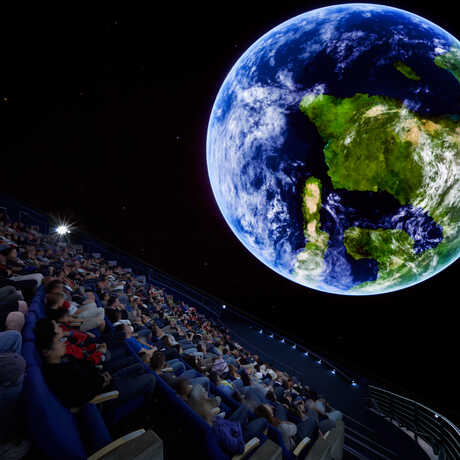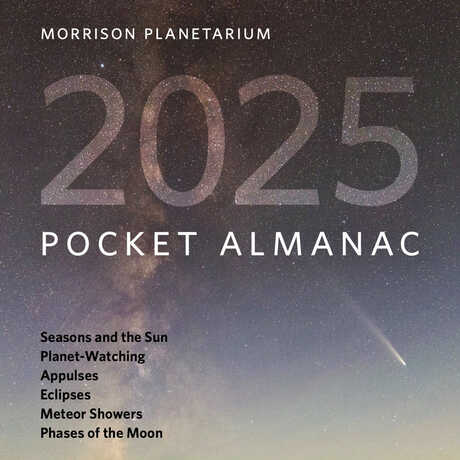From outer space to Earth's inner core, explore the universe from Morrison Planetarium's 75-foot digital dome.


This wide-band mosaic image of the solar surface was taken on June 22, 2022, at the Swedish 1-meter Solar Telescope located on La Palma in the Canary Islands, Spain. The image showcases beautiful examples of sunspot active regions and high-resolution surface granulation. Mosaic courtesy of Luc Rouppe van der Voort.
The Sun and the Earth: A Magnetic Connection
Monday, July 14, 7:30 p.m. Morrison Planetarium
Featuring Dr. Rebecca Robinson, SETI Institute: MUSE Mission Outreach
From our daily routines to seasonal changes, there are so many ways to experience our relationship with the Sun. For something upon which we rely so heavily, there are still quite a few mysteries that surround it! One of the biggest questions scientists have about the Sun seems so simple: Why is the Sun’s atmosphere so hot? Finding the answer to this question is a driving force behind solar physics today, and the key to solving this mystery might just unlock a few other clues along the way.
Join Dr. Robinson on a journey that begins deep inside the Sun, where superheated plasma flows generate the Sun’s tangled magnetic field. Learn how the magnetic field shapes and is shaped by the diffuse Solar atmosphere, and how resulting magnetic explosions offer crucial insights into unveiling the secrets of the Sun’s atmospheric processes.
Soon to join NASA’s proud fleet of Heliophysics missions, the Multi-Slit Solar Explorer (MUSE) is designed to collect the signatures of bright magnetic events in the Sun’s atmosphere and analyze them with unprecedented spectral detail. New data from MUSE will help us better understand not only the Sun’s atmosphere, but also how Earth’s relationship with the Sun is dictated by dynamic Solar magnetism.

Dr. Becca Robinson is a Michigan-born Norwegian transplant, now back in the US working as the outreach lead for NASA’s Multi-slit Solar Explorer (MUSE) mission. She is a Sun scientist, world traveler, rock collector, aurora chaser, and stargazer whose curious mind drives her day-to-day life as well as her research. Her research projects have involved drilling ice cores on Icelandic glaciers, analyzing solar simulations from her couch in Norway, and delivering scientific presentations worldwide from Svalbard to Armenia.
Becca received her BSc degrees in Physics and Astrophysics from Michigan State University, her MSc in Geophysics from the University of Iceland, and her PhD in Theoretical Astrophysics from the University of Oslo, specializing in solar magnetic fields. She’s been visible on a variety of platforms as an outreach specialist, but her two favorite outreach projects have been serving as the resident astrophysicist for Badlands National Park and sailing the Norwegian coast with Hurtigruten Expeditions (HX) as a solar and aurora specialist. She is a born communicator with a trained science background who enjoys making hard science accessible to everyone. If you’re curious to learn more about our Sun and what it means to live under its influence, don’t hesitate to get in touch with Becca!
From outer space to Earth's inner core, explore the universe from Morrison Planetarium's 75-foot digital dome.

Download Morrison Planetarium's 2025 Pocket Almanac to stay up-to-date on eclipses, meteor showers, satellite spottings, and more.
